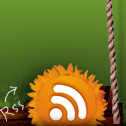Reading Strategies
How did we learn to read? ¬†Chances are, you were told to “sound it out! ¬† Researchers have studied successful readers and discovered that the best readers use a variety of strategies when reading and “sound it out” is only one of them. ¬†I will be teaching phonics and your child should be able to sound out certain words. ¬†However, that should NOT be the only trick in your child’s bag of reading tricks! ¬†We are working in the classroom on all of these strategies and your child will need support and encouragement to practice them when he/she becomes “stuck. ¬†When offering help, remember to suggest more than just “sound it out” with these additional reading strategies:
- 1.  Reread РThis is a highly successful strategy for new readers!  Remind your child to go back to the start of the sentence or the start of the page and REREAD when stuck on a word.  By focusing on the meaning of the sentence (and getting the beginning sound started when your child reaches the difficult word), the context of the sentence helps to supply the needed word.
- 2. ¬†Picture Clues – At this early stage in reading, students are provided pictures for a reason! ¬†Pictures provide clues to the text and the action in the story. ¬†Encourage your child to check the pictures for clues. ¬†We often begin reading by doing a “Picture Walk.” ¬†We’ll visit the pictures and see what might take place in the book before starting on the words. ¬†Don’t worry that your child will become dependent on the pictures. ¬†As your child grows as a reader, books will provide fewer and fewer pictures and your child is naturally weaned away from picture clues.
- 3. ¬†Does it sound right? ¬†This is where your child’s knowledge of phonics kicks in. ¬†Besides thinking about the story and fitting in with the picture clue, do the letter sounds match the word? ¬†These strategies all work together to help provide the missing pieces of the puzzle as your child reads.
- 4. ¬†Does it make sense? ¬†This is a good reading strategy for comprehension. ¬†When your child is reading to you and he/she misreads a word, try to be patient and not correct your child immediately. ¬†We will be working hard on¬†self-correcting mistakes. ¬†Hopefully, as your child continues reading, he/she will realize something didn’t make sense and will go back to reread. ¬†As a teacher, this shows me that the student is THINKING about what they are reading which is critical for recall. ¬†What if your child plows ahead and never self-corrects? At the end of the page (or end of the paragraph for longer pages), point out what didn’t make sense and ask your child to reread that part. ¬†Often, if you don’t swoop in immediately with help, your child will surprise you by self-correcting . . . it just takes students a little while for the error to register.
